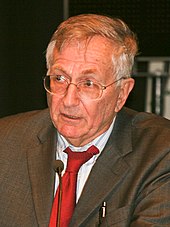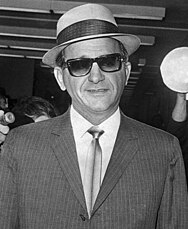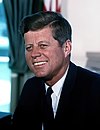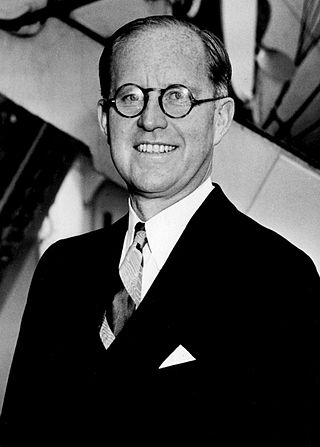
Joseph Patrick Kennedy was an American businessman, investor, philanthropist, and politician. He is known for his own political prominence as well as that of his children and was a patriarch of the Kennedy family, which included President John F. Kennedy, Attorney General and Senator Robert F. Kennedy, and longtime Senator Ted Kennedy.

Seymour Myron "Sy" Hersh is an American investigative journalist and political writer. He gained recognition in 1969 for exposing the My Lai massacre and its cover-up during the Vietnam War, for which he received the 1970 Pulitzer Prize for International Reporting. During the 1970s, Hersh covered the Watergate scandal for The New York Times, also reporting on the secret U.S. bombing of Cambodia and the Central Intelligence Agency's (CIA) program of domestic spying. In 2004, he detailed the U.S. military's torture and abuse of prisoners at Abu Ghraib in Iraq for The New Yorker. Hersh has won a record five George Polk Awards, and two National Magazine Awards. He is the author of 11 books, including The Price of Power: Kissinger in the Nixon White House (1983), an account of the career of Henry Kissinger which won the National Book Critics Circle Award.
Mark William Hofmann is an American counterfeiter, forger, and convicted murderer. Widely regarded as one of the most accomplished forgers in history, Hofmann is especially noted for his creation of fake documents related to the history of the Latter Day Saint movement. When his schemes began to unravel, he constructed bombs to murder three people in Salt Lake City, Utah. The first two bombs killed two people on October 15, 1985. On the following day, a third bomb exploded in Hofmann's car. He was arrested for the bombings three months later, and in 1987 pleaded guilty to two counts of second-degree murder, one count of theft by deception and one count of fraud.

Charles Reznikoff was an American poet best known for his long work, Testimony: The United States (1885–1915), Recitative (1934–1979). The term Objectivist was coined for him. The multi-volume Testimony was based on court records and explored the experiences of immigrants, black people and the urban and rural poor in the United States in the late nineteenth and early twentieth centuries. He followed this with Holocaust (1975), based on court testimony about Nazi death camps during World War II.
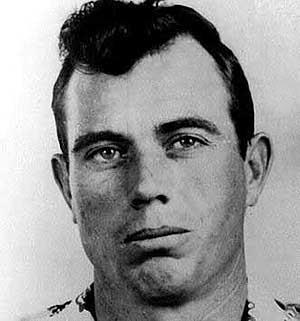
J. D. Tippit was an American World War II U.S. Army veteran and police officer who served as an 11-year veteran with the Dallas Police Department. About 45 minutes after the assassination of John F. Kennedy on November 22, 1963, Tippit was shot and killed in a residential neighborhood in the Oak Cliff section of Dallas, Texas, by Lee Harvey Oswald. Oswald was initially arrested for the murder of Tippit and was subsequently charged for killing President Kennedy. Oswald was murdered by Jack Ruby, a Dallas nightclub owner, two days later.
United States v. Eichman, 496 U.S. 310 (1990), was a United States Supreme Court case that by a 5–4 decision invalidated a federal law against flag desecration as a violation of free speech under the First Amendment. It was argued together with the case United States v. Haggerty. It built on the opinion handed down in the Court's decision the prior year in Texas v. Johnson (1989), which invalidated on First Amendment grounds a Texas state statute banning flag burning.

Rice Stadium is an American football stadium located on the Rice University campus in Houston, Texas. It has been the home of the Rice Owls football team since its completion in 1950, and hosted John F. Kennedy's "We choose to go to the Moon" speech in 1962 and Super Bowl VIII in early 1974.

The First Republic of Armenia, officially known at the time of its existence as the Republic of Armenia, was an independent Armenian state that existed from May 1918 to 2 December 1920 in the Armenian-populated territories of the former Russian Empire known as Eastern or Russian Armenia. The republic was established in May 1918, with its capital in the city of Yerevan, after the dissolution of the short-lived Transcaucasian Democratic Federative Republic. It was the first Armenian state since the Middle Ages.
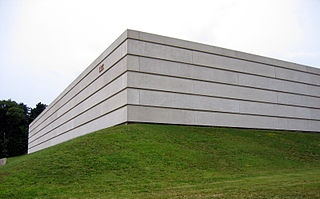
The Broadview Center, formerly known as the SEFCU Arena, is a 3,800-seat multi-purpose arena in Guilderland, New York. It is home to the University at Albany men's and women's Great Danes basketball teams. It is most notable for hosting the 2006 America East Conference men's basketball tournament championship, in which the Great Danes defeated Vermont, to earn their first bid into the NCAA Men's Division I Basketball Championship. The arena additionally hosted the 2009 America East men's basketball tournament, and is also a venue for the university's graduate commencement ceremonies. It can also can be formatted as a concert venue or to accommodate trade shows and conventions.

David Francis Powers was Special Assistant and assistant Appointments Secretary to U.S. president John F. Kennedy. Powers served as Museum Curator of the John F. Kennedy Library and Museum from 1964 until his retirement in May 1994. Powers was a military veteran who served in the U.S. Army Air Corps during World War II from 1942 to 1945. Powers was also a close friend of Kennedy.
Alexander Howland Smith, also known as the "Antique Smith", was a Scottish document forger in the 1880s. His forgeries still surface today.
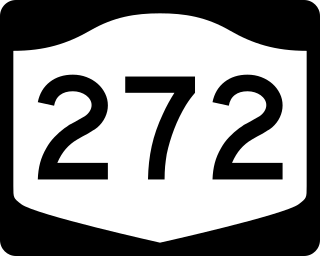
New York State Route 272 (NY 272) is a north–south state highway in the western portion of New York in the United States. It extends for just over 7.5 miles (12.1 km) along the Orleans–Monroe county line from an intersection with NY 104 in Clarkson to the Lake Ontario shoreline just north of an interchange with the Lake Ontario State Parkway in the Hamlin hamlet of Troutburg. The route is two lanes wide for its entire length and passes through mostly rural areas, save for the hamlet of Morton at a junction with Kenmore and Morton Roads. NY 272 was assigned as part of the 1930 renumbering of state highways in New York and has not been altered since.
Charlotte Y. Martin Centre is an athletics center in the northwest United States, on the campus of Gonzaga University in Spokane, Washington. Its multi-purpose arena has a seating capacity of 4,000.

New York State Route 261 (NY 261) is a north–south state highway located west of the city of Rochester in Monroe County, New York, in the United States. It extends for 7.70 miles (12.39 km) through mostly rural areas from an intersection with NY 104 on the Greece–Parma town line to a dead end at the Lake Ontario shoreline in Greece. The majority of NY 261 is situated on the boundary between the towns of Greece and Parma; however, the last 2 miles (3.2 km) of the route are located solely in Greece. NY 261 meets the Lake Ontario State Parkway southwest of Manitou Beach on the latter stretch.

The Lee & Rose Warner Coliseum is a 5,000-seat indoor arena in Falcon Heights, Minnesota, United States. Built in 1951 on the grounds of the Minnesota State Fair, the venue hosts indoor events of the fair such as livestock shows, dog shows, equestrian and bull riding. During the fair, vendors selling merchandise such as Western wear fill the concourse.
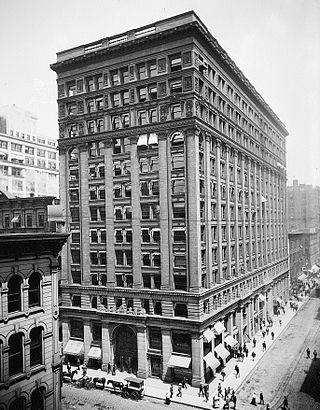
The New York Life Insurance Building is a 14-story building at 39 South LaSalle Street in the Loop neighborhood in Chicago, Illinois. Designed by William Le Baron Jenney, it was completed as a 12-story structure in 1894 at a cost of $800,000, equivalent to $28,172,308 in 2023. In 1898, Jenney designed a 92 ft (28 m) addition to the east of the original structure. This expanded the Monroe Street facade to 233 ft (71 m). The addition contained 13 floors and an additional floor was added to the first structure. The expansion also added an entrance on Monroe Street and enlarged the lobby. In 1903, a fourteenth floor was added bring the building to its current height.

The Ireland Shakespeare forgeries were a cause célèbre in 1790s London, when author and engraver Samuel Ireland announced the discovery of a treasure-trove of Shakespearean manuscripts by his son William Henry Ireland. Among them were the manuscripts of four plays, two of them previously unknown.

The Aztec Bowl was an outdoor stadium in San Diego, California, located on the campus of San Diego State University. The stadium was home of the San Diego State Aztecs football team.
Charles Hamilton, Jr. was an American paleographer, handwriting expert and author of historical works. He invented the term "philography" as another term for his profession. He is the author of a number of books on this topic. He was also an autograph dealer. He died in New York City at the age of 82.
Merrell Williams Jr.(1941-2013) was a whistleblower in the tobacco industry, revealing secret papers of tobacco companies showing that the companies had been lying to the public. It eventually resulted in a multi-billion-dollar settlement with the US states.


